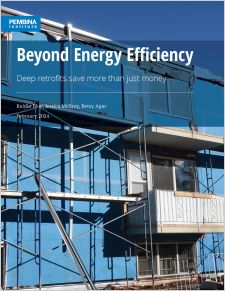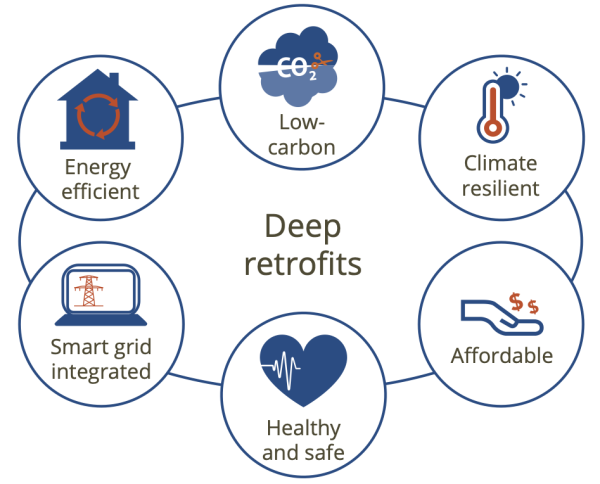
Canadian decision-makers must start making the case for deep retrofits of the building stock beyond energy savings and zero in on broader objectives like carbon emissions reductions, health and wellness, affordability, and climate adaptation.
Canada is beginning to recognize the need for deep retrofit of its building stock, but the current paradigm within which retrofits are viewed is focused on near-term return on investment rather than long-term financial and non-monetary benefits. While deep energy retrofits are predominantly valued for their energy savings — which are important — our aging building stock represents a once-in-a-lifetime opportunity to drastically drive down carbon emissions, improve the health and safety of occupants, increase heating and cooling affordability, integrate the building with the grid, and adapt to and mitigate climate change. As Canada decarbonizes its building stock, the deep retrofit paradigm needs to shift beyond cost recovery through energy savings towards capturing the full value of non-energy benefits.
Key components of the proposed paradigm shift include:
Retrofitting for low carbon: Implementing energy efficiency measures and fuel switching to reduce operational carbon, and selecting materials that have low embodied carbon.
Retrofitting for climate resilience: Retrofitting to improve resilience in the face of climate-related risks and protect Canadians, especially vulnerable populations.
Retrofitting for health: Investing in deep retrofits to mitigate climate-related health risks such as by improving indoor air quality and reducing exposure to extreme temperatures.
Retrofitting for affordability: Equitable distribution of deep retrofit benefits to overcome the disproportionate impact of climate events and energy poverty on vulnerable communities.
Retrofitting for smart grid integration: Implementing energy efficiency measures, onsite renewable energy generation, and smart controls to transform buildings into grid-integrated energy hubs.
In this report we outline a new paradigm for how we approach and value deep retrofits to help Canada prepare for a net zero future while protecting people in their homes.
These valuable non-energy benefits are not usually captured in the payback of a retrofit and so are typically ignored. This means the full value of a retrofit versus the payback of the investment are not generally aligned.

The authors conclude with several recommendations, such as the need for governments to create targeted policies and support for fuel switching and efficiency improvements for those who are currently facing, or at risk of, energy poverty. They also recommend setting targets for decarbonizing and adapting homes to ready them for increasingly frequent and extreme weather, supporting industry capacity growth and opening workforce opportunities for equity-deserving groups, and more.


